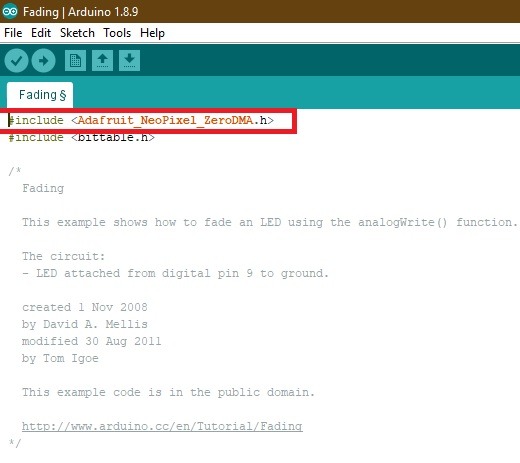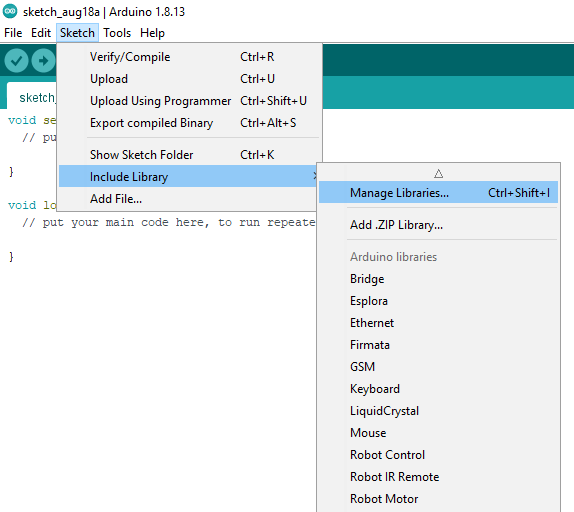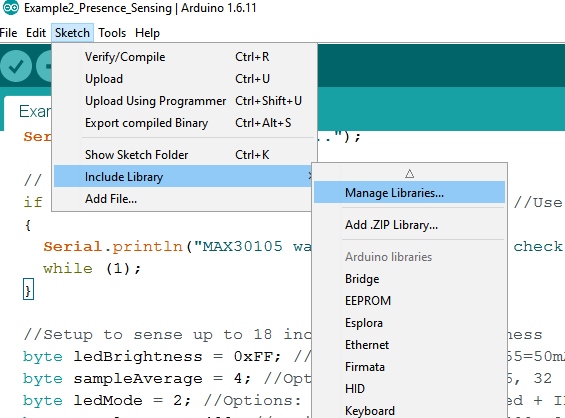

- #Using arduino libraries install
- #Using arduino libraries zip file
- #Using arduino libraries software
- #Using arduino libraries code
The C/C++ compiler compiles your source code, including setup(), loop(), and any other functions you have created, into an object file.I recommend going back to one of the Arduino example programs, blink for instance, and watching the console log as Eclipse compiles and links the program. Arduino programs don't have a C/UNIX-style "main" function, the standard functions are "setup" and "loop."
#Using arduino libraries code
I haven't used Eclipse for Arduino development, I just stick with the Arduino IDE, but the standard Arduino projects expect all of your code to be in a single source file, which it compiles and then links with the Arduino libraries. The error you received above isn't a compiler error, it's a linker error. Thank you for any help or pointers to where I can figure it out for myself. Make: *** Error 1Īs a test, I'm just trying to call a basic "write to display" call in eInk.cpp from main.c: extern "C" in my. Makefile:53: recipe for target 'Virgin2ManualArdInsert.elf' failed Main.c:(.+0xc): undefined reference to `writeEink'Ĭollect2: error: ld returned 1 exit status

Building target: Virgin2ManualArdInsert.elfĪvr-gcc -Wl,-Map,Virgin2ManualArdInsert.map -mmcu=atmega2560 -o "Virgin2ManualArdInsert.elf". When I try to merge the 2 code bases together, I can't seem to call the functions in the added arduino libraries - if I call them the compiler throws a linking error. If I create a new arduino project using the plugin in eclipse, I can build and run the tests for the arduino libraries perfectly. I need to use several libraries with this project that are only available as arduino libraries, namely libraries for an e-paper screen (from seeedstudio) and Nordic's BLE nRF8001. Using the arduino board is strictly for hardware convenience we are developing the hardware to be a custom board with most of the core arduino mega2560 components. My target is an ATmega2560, in the form of an arduino mega2560. The code that I have is C (Open Source), and I've gotten it adjusted so it runs perfectly. Generally, we will change it as ….Arduino – 1.0.5\libraries as shown below.I am using Eclipse kepler for AVR development. You can see the location of the library: File->Preferences->Sketchbook location, and can change the location.
#Using arduino libraries zip file
Now the zip file has been installed in your Arduino sketches directory.You should now see the library at the bottom of the drop-down menu. Return to the Sketch > Import Library menu.Here I select a library named smallePaper. You will be prompted to select the library you would like to add.Select “Add Library.” at the top of the drop down list.

#Using arduino libraries install
Take Arduino1.0.5 as an example, you can install a library in Arduino IDE. h file and often a keywords.txt file, examples folder, and other files required by the library. Or you can refer to another method to add libraries. It is very easy for you to add the libraries in this way! Then, click to open the libraries folder, you can directly add the libraries inside the folder. Here we will introduce the most simple way for you to add librariesĪfter download well the Arduino IDE, you can right-click the icon of Arduino IDE.įind the option "Open file location" shown as below. To use the additional libraries, you will need to install them. The built-in libraries and some of these additional libraries are listed in the reference. There are hundreds of additional libraries available on the Internet for download. For example, the built-in LiquidCrystal library makes it easy to talk to character LCD displays. Libraries are a collection of code that makes it easy for you to connect to a sensor,display, module, etc. You may want to extend the ability of your Arduino with additional libraries.
#Using arduino libraries software
Once you are comfortable with the Arduino software and using the built-in functions,


 0 kommentar(er)
0 kommentar(er)
